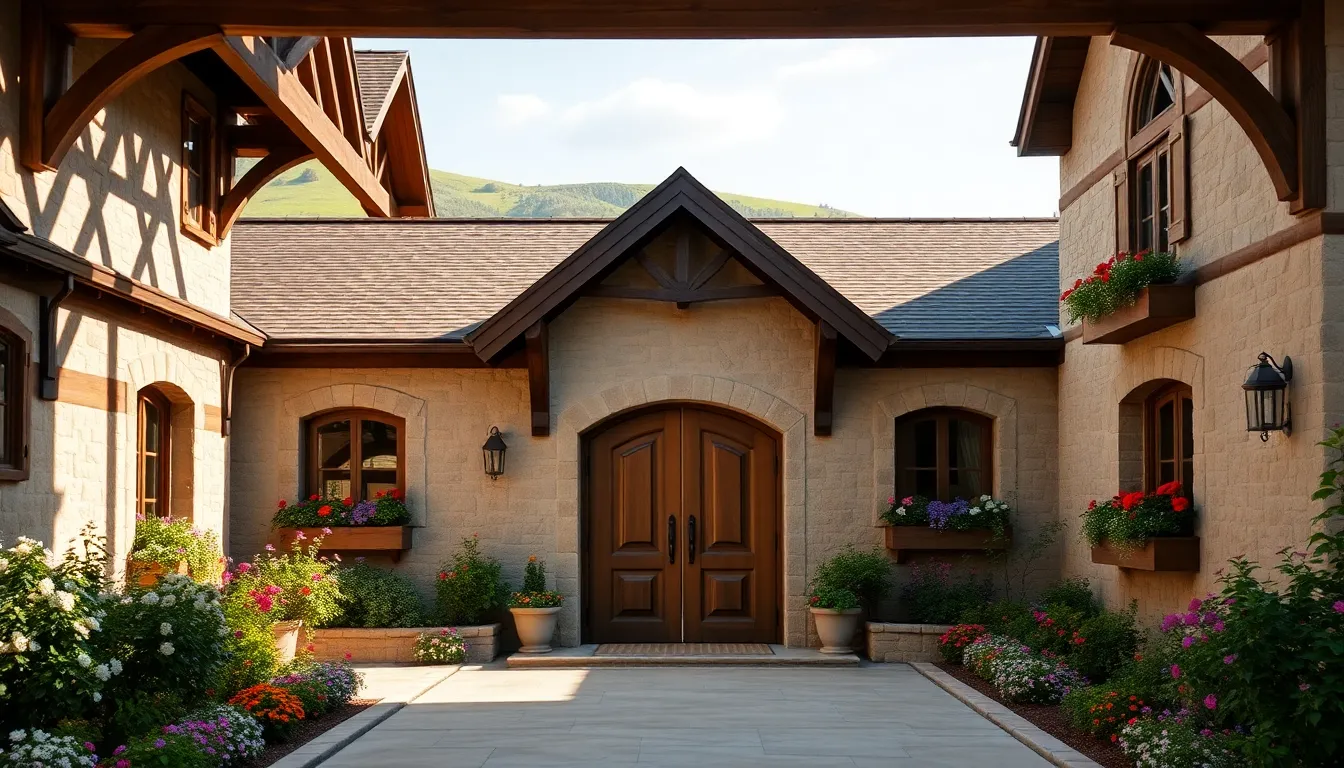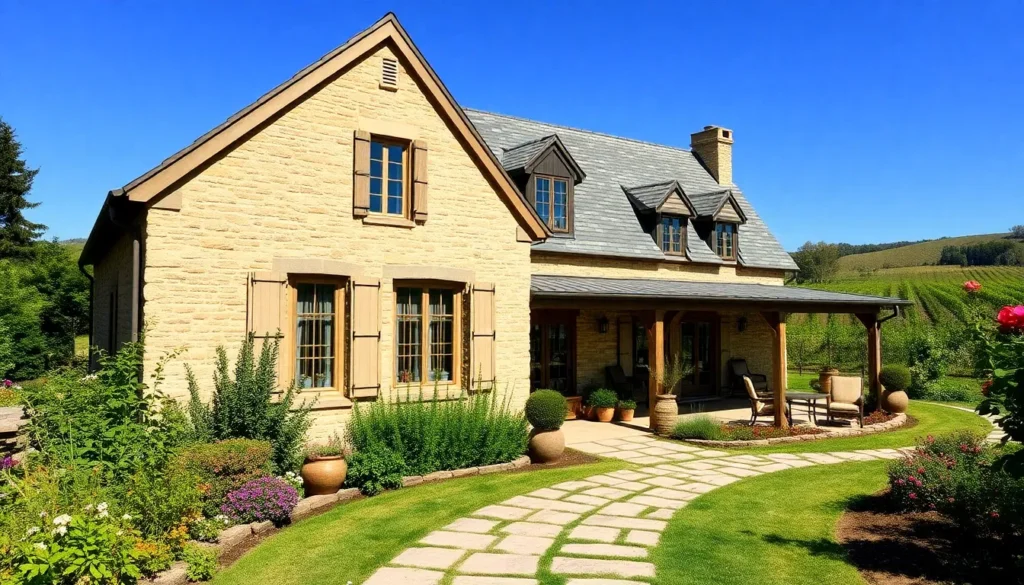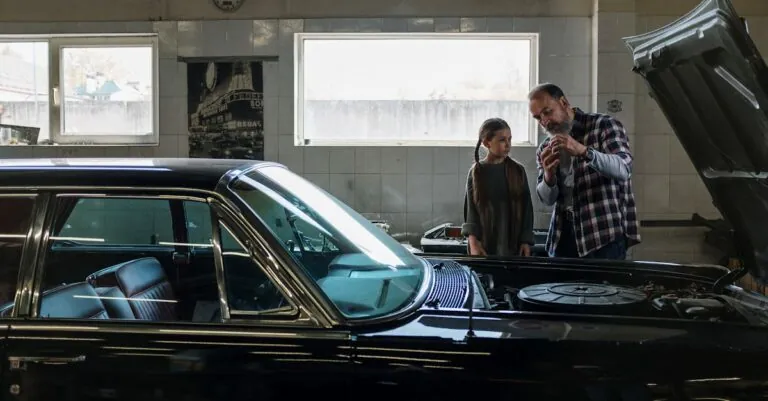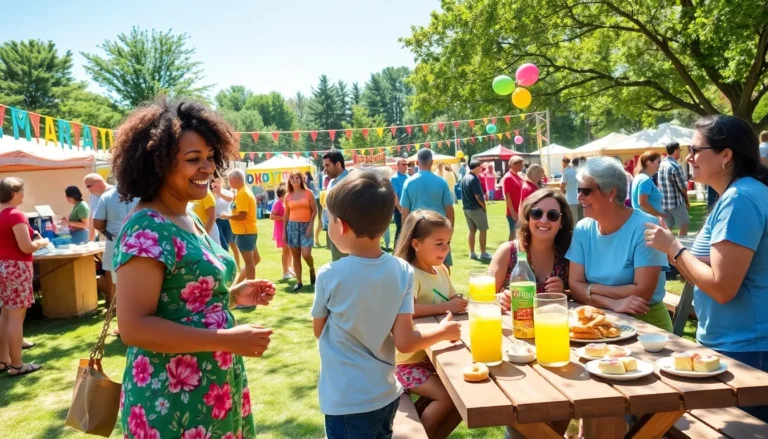Table of Contents
ToggleWhen it comes to charming aesthetics, French country architecture captures the imagination like none other. Think of sun-drenched fields, rolling vineyards, and quaint villages that make you feel like you stepped straight into a fairytale. But what’s really behind this idyllic style? Let’s jump into a journey that mixes history and design, with a sprinkling of humor and a whole lot of charm. Buckle up because we’re about to uncover the secrets behind those picturesque homes that make you wonder whether you should be sipping wine or enjoying a baguette under the sun.
Historical Overview of French Country Architecture

The roots of French country architecture stretch back centuries, influenced by the geographic diversity of France itself. Originating from times when peasants crafted modest dwellings, the style evolved dramatically during the Renaissance. Manifesting in rustic yet elegant homes, French country architecture celebrates a blend of functionality and aesthetic appeal. Using local materials such as stone and wood, the early architects crafted enduring structures that mirror their surroundings.
By the 18th century, the style began to reflect a sense of refinement. The rise of the bourgeoisie added a sprinkle of luxury to these homes, introducing larger spaces and intricate details. While it holds deep historical significance, French country architecture remains profoundly accessible, embodying a warmth and inviting charm that resonates even today.
Key Characteristics of French Country Homes
So, what exactly makes French country homes so enchanting? First up, consider their steep, gabled roofs. These roofs not only add character but also shed rain and snow efficiently. Walls are typically made from natural materials, giving them a rustic appearance that marries beauty with practicality.
Next, let’s talk windows. Often, you’ll find tall, narrow windows adorned with shutters in soft, muted colors. These windows let in plenty of light and enhance the charm considerably. Also, be on the lookout for exposed beams and stone façades, which evoke a sense of history and create a cozy ambiance.
Finally, French country homes often feature inviting porches. Imagine sipping a café au lait while enjoying the morning sun in a hammock, sounds dreamy, doesn’t it? This indoor-outdoor connection is integral to the layout, perfectly showcasing the home’s relationship with its surroundings.
Influences on French Country Architecture
The influences shaping French country architecture are as varied as the regions from which they come. Notably, Roman and medieval architecture laid the groundwork for French designs. Massive stone buildings and arches borrowed from these eras offered both strength and beauty.
As France moved through the Baroque and Rococo periods, architecture also shifted. Heightened ornamentation contrasted the earlier simplicity, adding layers of elegance that still echo in contemporary designs. Besides, the Provencal region’s style, characterized by rustic charm and vibrant colors, has significantly influenced modern interpretations of French country architecture.
Also, local climate plays a role in architectural choices. For instance, homes in warmer regions might incorporate larger windows and shaded verandas, while those in cooler climates opt for smaller, cozier designs that maximize warmth.
Regional Variations in French Country Architecture
From the Loire Valley to Provence, French country architecture is a tapestry woven from diverse regional characteristics. Each area brings its own twist to the iconic style, producing homes that reflect local traditions and materials.
In Normandy, for example, timber-framed homes create a distinctive silhouette against hedgerows and fields. Meanwhile, in the south, stucco buildings in warm earth tones harmonize beautifully with the sun-drenched landscape.
Brittany offers a unique coastal version, with homes exhibiting stone walls that protect against fierce winds. Such variations highlight how geography influences design, resulting in homes that not only look exquisite but also withstand their environment.
Integration of Nature in French Country Designs
One of the most enchanting aspects of French country architecture is its deep-rooted connection to nature. Gardens are not merely an afterthought: they play an integral role in the overall design. Traditionally, these homes boast sprawling gardens filled with fragrant herbs, blooming flowers, and trees that provide shade and beauty.
The use of natural materials extends to landscaping as well. Paths made of local stone lead visitors through lush greenery while incorporating outdoor seating areas encourage leisurely afternoons basking in the tranquility of nature.
Also, large windows and open layouts emphasize indoor-outdoor living. Such spaces invite the landscape inside, blurring the lines between home and nature and amplifying the sense of peace that characterizes this architectural style.
Modern Adaptations of French Country Style
In recent years, French country architecture has undergone adaptations that blend its timeless charm with modern sensibilities. Homeowners increasingly lean towards open floor plans and eco-friendly materials while still embracing classic elements.
Contemporary designs often feature simplified versions of traditional gabled roofs and clean lines, yielding a fresh take on familiar aesthetics. New technologies play a crucial role too, solar panels and energy-efficient systems harmonize with the traditional look without compromising the character of the style.
Also, interior designs now mix vintage French décor with modern furnishings, creating eclectic spaces that cater to today’s lifestyles without losing the inviting atmosphere that defines French country homes.





